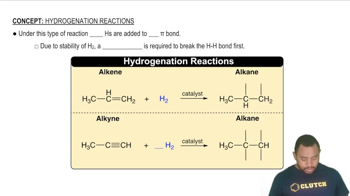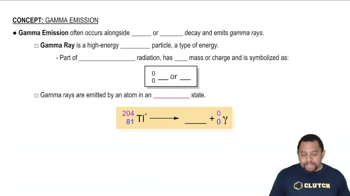Does the hydrogen atom 'expand' or 'contract' when an electron is excited from the n = 1 state to the n = 3 state?
Is energy emitted or absorbed when the following electronic transitions occur in hydrogen? b. from an orbit of radius 2.12 Å to one of radius 8.46 Å
 Verified step by step guidance
Verified step by step guidance
Verified video answer for a similar problem:
Key Concepts
Energy Levels in Hydrogen

Photon Emission and Absorption

Rydberg Formula

Classify each of the following statements as either true or false: (a) A hydrogen atom in the n = 3 state can emit light at only two specific wavelengths (b) a hydrogen atom in the n = 2 state is at a lower energy than one in the n = 1 state (c) the energy of an emitted photon equals the energy difference of the two states involved in the emission.
Is energy emitted or absorbed when the following electronic transitions occur in hydrogen? a. from n = 4 to n = 2
Indicate whether energy is emitted or absorbed when the following electronic transitions occur in hydrogen: a. from n = 3 to n = 6
a. Using Equation 6.5, calculate the energy of an electron in the hydrogen atom when n = 2 and when n = 6. Calculate the wavelength of the radiation released when an electron moves from n = 6 to n = 2.
Consider a transition of the electron in the hydrogen atom from n = 4 to n = 9. b. Will the light be absorbed or emitted?
